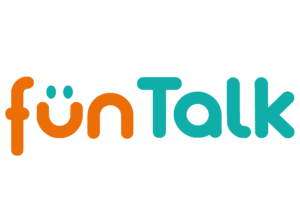Learning from mistakes
 “
“
He who has never made a mistake, has never tried anything new.
“. – Albert Einstein
“The biggest mistake you can make in life is to fear to err constantly.” – Elbert Hubbard
When a certain level of English is reached during our learning of the language, there comes a time when we start to be able to communicate through the
vocabulary
and the
grammar
we have learned and that feels good, doesn’t it! However, at this point students tend to translate everything from their native language into English. Although a decent conversation can be held in this way, many times our students say things that are confusing and not entirely clear. This is a consequence of l
“Spanglish”.
that is, the mixture of English and Spanish. However, there are many occasions in which translating something literally is totally correct, as the saying goes: “You don’t lose anything by trying”.
From FunTalk, we encourage you to make mistakes because it means that you are trying hard and it means that you want to learn and that you want to be corrected so that you don’t make the same mistake again. You can’t make progress without making mistakes, especially when you’re learning English.
learning English
. Our job is to help correct these faults and to help the student to
progress. In fact, one of the biggest complaints from English language learners is that they are not corrected for the mistakes they make.
At FunTalk, we pride ourselves on the time we spend correcting errors and mistakes. During the classes,
OUR TEACHERS
they take notes of the mistakes made by the students, correcting them and then teaching the correct way through several significant examples that allow their complete assimilation. Many of the mistakes we make learning languages are repeated because we don’t even know we are making a mistake; we have never been corrected or we don’t know the correct written or spoken usage even after being corrected.
When corrected, the student feels more willing to try and not be afraid of making mistakes again. Moreover, he is aware of his own mistakes and will eventually begin to correct himself.
Here are some examples of Spanglish:
- Beginner’s mistake: “I have 25 years”.
- Correct answer: “I am 25″ or “I am 25 years old”.
- Intermission error: “I am agree with you”.
- Correct answer: “I agree with you”.
- Intermediate-high error: “We arrived to an agreement”.
- Correct answer: “We reached an agreement”.
You can see
more examples of Spanglish
examples, and how to correct them, created by FunTalk in Quizlet, which you can use as a working tool.
So forget about the dishonor of making mistakes and don’t be afraid to say something wrong; just correct it, laugh about it and move on. May you make many mistakes and, most importantly, may you be happy learning!
Learning from mistakes
“Anyone who has never made a mistake has never tried anything new.” – Albert Einstein
“The greatest mistake you can make in life is to be continually fearing you will make one.” – Elbert Hubbard
When reaching a certain level in our English learning language process we begin to be able to communicate with the vocabulary and grammar that we have learned, and it feels great, doesn’t it! However, learners sometimes translate literally from their mother tongue to English. Even though we are able to have a descent conversation using this technique, many times what our students come out with when speaking may be confusing and not completely clear, and result in a mix of both Spanish and English, called ‘Spanglish’. Having said that, there are many times when translating literally is perfectly correct, so as the saying goes, ‘You don’t know if you don’t have a go!’
At FunTalk we encourage mistakes, because this means that you are trying, this means that you want to learn and be corrected in order to not make the same mistake again. Without mistakes there is no progress, especially in learning a language. Our job is to help correct these mistakes and help the student improve. Actually, lack of error correction is one of the biggest complaints from students.
At FunTalk we take pride in the time we dedicate to error correction. During class time the teacher takes thorough notes, identifies mistakes, corrects the mistakes, and then teaches the correct form of the language using several meaningful contexts to improve understanding. Many mistakes we make in learning a language are repeated because we are not aware of the mistake, we’re never corrected, or we don’t use the correct form enough after being corrected to make the change when speaking or writing.
Through error correction the student is made to feel more willing to try and not be afraid of making mistakes. Students also become more aware of their own errors and ultimately begin to correct themselves.
Here are a few examples of Spanglish:
- A beginner mistake – ‘I have 25 years.’
Correct answer – ‘I am 25, or ‘I am 25 years old.’
- An intermediate mistake – ‘I am agree with you.’
Correct answer – ‘I agree with you.’
- An upper intermediate mistake – ‘We arrived to an agreement.’
Correct answer – ‘We reached an agreement.’
To find more Spanglish examples and how to correct them, check out this study tool created by FunTalk on Quizlet.
So forget the stigma of making mistakes, don’t be afraid of being wrong, just correct it, laugh about it and move on. Happy mistake making, and more importantly, happy learning!
